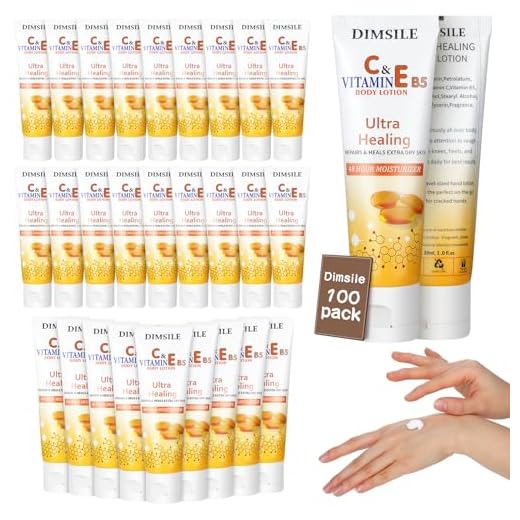


Travelers can pack liquid skincare products in their hand baggage, provided they adhere to specific regulations. Each container must not exceed 3.4 ounces (100 milliliters) and all items should fit within a quart-sized clear, resealable plastic bag.
It’s advisable to keep this bag easily accessible for security checks. Certain exceptions exist, such as for medical necessities or baby care items, which might allow more significant quantities. Always check the latest regulations of the airline and destination before packing.
For those looking to maintain their skincare routine on the go, consider solid alternatives or travel-specific sizes to simplify the process. This approach ensures compliance while keeping your essentials handy during your journey.
Guidelines for Packing Moisturizers in Hand Baggage
Moisturizers can be transported in hand baggage if they comply with specific restrictions. Containers must not exceed 3.4 ounces (100 milliliters) and should fit within a quart-sized clear plastic bag.
The following table summarizes the regulations for transporting moisturizers in hand baggage:
| Item | Restriction |
|---|---|
| Container Size | Maximum 100 ml (3.4 oz) |
| Plastic Bag | Must be quart-sized (approx. 1 liter) |
| Number of Items | Typically limited to one bag per passenger |
| Sealing | Bag must be resealable |
Check with your airline or airport for any additional rules, as regulations may differ by location or carrier.
Understanding TSA Regulations for Liquids
For air travel, it is crucial to comply with the Transportation Security Administration (TSA) guidelines regarding liquid items. Each container must not exceed 3.4 ounces (100 milliliters). This limit applies to all types of liquids including gels and creams, which must fit within a quart-sized bag.
Container Requirements
Containers must be clear, resealable, and quart-sized. Each passenger is allowed one such bag in their personal item or carry-on, enabling efficient security checks. Ensure the bag is easily accessible during screening to expedite the process.
Exceptions and Special Cases
Items categorized as medications or essential liquids may be exempt from size restrictions. However, travelers must notify security personnel and may require proper documentation. This applies to baby formula and liquid nutrition, which must also be screened separately.
Always check the latest TSA updates before traveling, as regulations may change, ensuring all items comply with current standards for smooth passage through security checkpoints.
What Size Containers Are Permitted for Carry-On?
Only containers of 3.4 ounces (100 milliliters) or smaller are suitable for transport in your onboard bag. Ensure that these vessels fit within a single quart-sized resealable plastic bag for security screening. This bag must be able to seal completely, as loose or open containers will not meet requirements.
Specific Container Options
Opt for travel-sized products available in stores, or transfer your preferred items into appropriately sized, empty bottles. Many brands offer miniature versions explicitly designed for air travel. Avoid oversized packaging to prevent issues at checkpoints.
Practical Tips for Packing
Always place your liquid items in the plastic bag and keep it easily accessible in your bag for quick removal during screening. Consider purchasing best luggage for construction workers to protect your belongings while adhering to regulations. If traveling to Asia, check into best luggage for travel to asia to ensure your items remain compliant and secure throughout your trip.
How to Pack Moisturizers to Avoid Spills
To prevent leaks while traveling, choose travel-sized containers that comply with regulations. Look for bottles with secure, tight-fitting caps. Squeeze tubes or pump dispensers work exceptionally well for minimizing exposure to air and bacteria.
Utilize Plastic Wrap
Wrap the top of each container with plastic wrap before sealing the lid. This acts as an extra layer of protection against accidental openings during transit.
Opt for Ziplock Bags
Place all liquid products inside a durable, resealable plastic bag. This containment method prevents any potential spills from affecting other items in your belongings.
Exceptions for Medical and Special Use Products
Exceptions exist for certain items intended for medical purposes or specific requirements. These products are typically exempt from standard liquid restrictions.
Medical Necessities
- Prescription medications are permitted in quantities necessary for the duration of travel.
- Documentation, such as a prescription note, may be advisable to facilitate security checks.
Special Needs Items
- Essential personal care items, such as those for diabetics or individuals with skin conditions, can be transported if they meet requirements.
- Baby formula, breast milk, and juice for infants can exceed standard volume limits, requiring declaration at the checkpoint.
Always consult your airline or the TSA website for the most accurate and updated information regarding specific items and the process for bringing them on board.
Travel Tips for Carrying Skincare Products
Opt for travel-sized containers to ensure compliance with regulations. Purchase reusable bottles specifically designed for air travel to minimize potential issues at security checkpoints.
Keep Products in Original Packaging
When possible, maintain skincare items in their original packages. This helps with identification and can assist with documentation if needed. If you do transfer products, label containers clearly to avoid confusion.
Use a Zip-Top Bag
All liquid items should fit into a quart-sized zip-top bag. Keep this bag easily accessible in your backpack or purse. This practice speeds up the screening process, as you can simply place the bag in a bin for inspection.
For more detailed instructions on managing various types of travel gear, check out this refilling a co2 tank with an air compressor a step by step guide.







